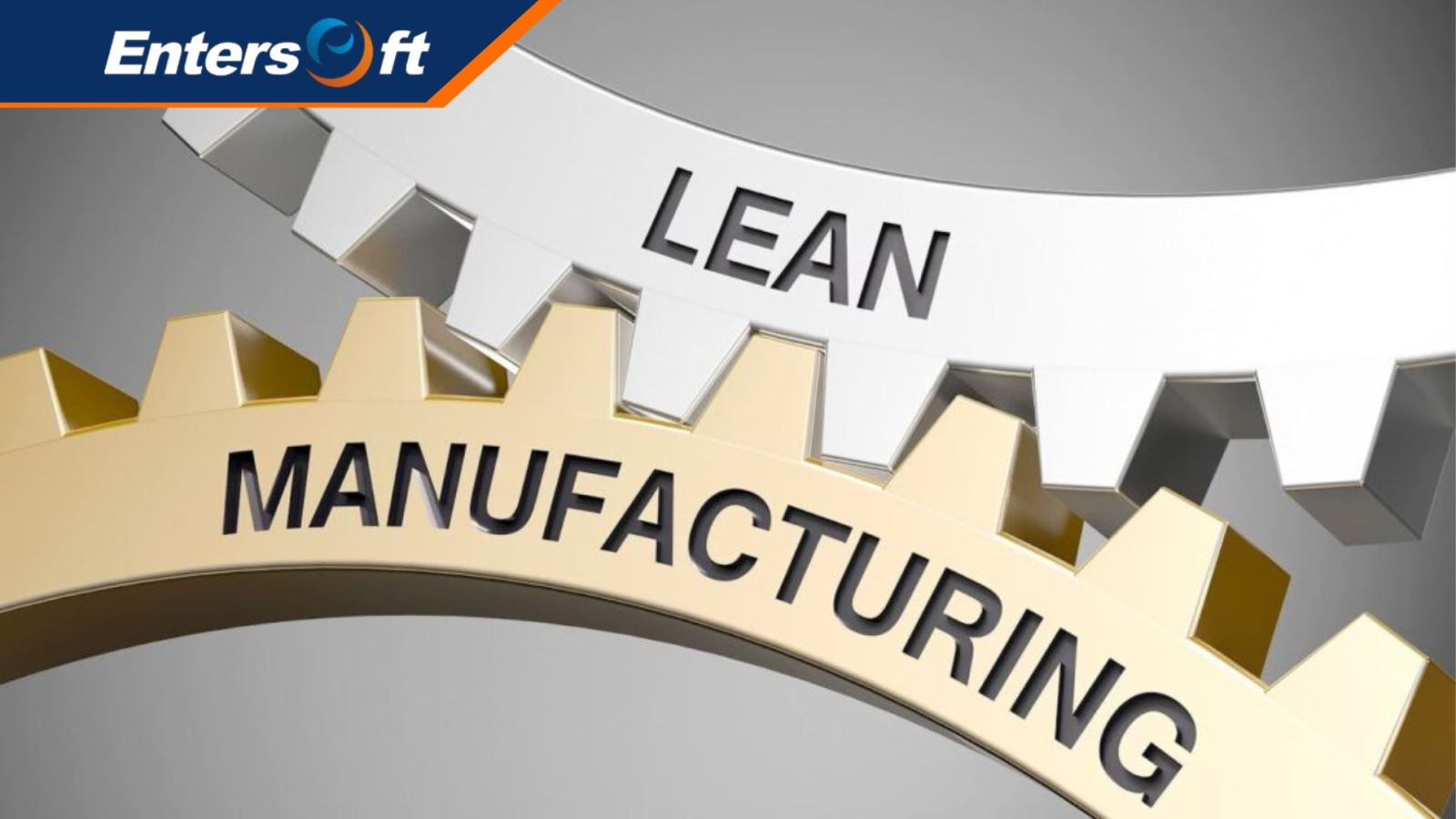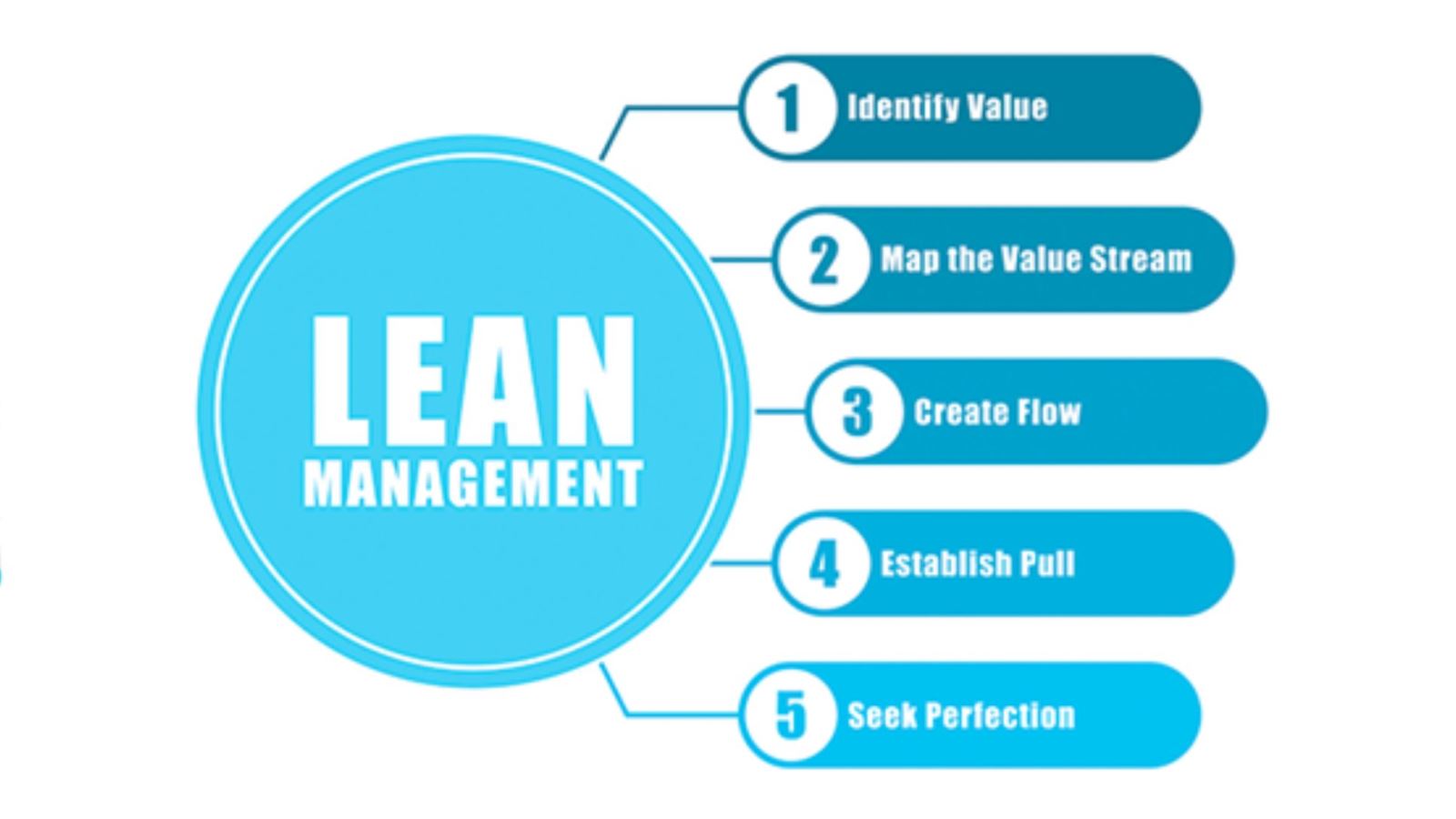6 signs that help leaders not miss business improvement opportunities
The signs indicating the need for business improvement are warnings about potential or existing issues that the business is facing.
In the context of an increasingly developing and fiercely competitive economy, optimizing production efficiency and increasing productivity are indispensable goals for every business. To meet the diversity and rapid changes of the market, the application of modern management and production methods is essential. Among these, the lean production method has emerged as a noteworthy solution, helping streamline the production process, minimize waste, and enhance industrial performance.

The Lean Production Method is not only a simple way to change the production process but also a management philosophy that directs the entire operation of a business toward optimization. This originates from the mindset of Toyota - one of the world's leading manufacturing conglomerates, and it has subsequently been widely applied and developed in various industries around the globe.
In this article, we will delve into the concept and benefits of the lean production method, along with the methods and steps involved in its implementation. By mastering the knowledge of this topic, businesses can enhance the efficiency of their production operations, improve product quality, and create a competitive edge in the market.
Lean production is a management method aimed at reducing waste, increasing productivity and quality, and meeting customer demands. The origin of lean production comes from Japan, based on the philosophy of the Toyota Production System (TPS).
The Toyota Production System was developed by Toyota managers such as Taiichi Ohno and Eiji Toyoda in the years 1950-1960. They learned from and applied the principles of Henry Ford, W. Edwards Deming, Joseph Juran, and other researchers in mass production, quality control, and continuous improvement.
The goal of the Toyota Production System is to create high-value products for customers by eliminating non-value-added activities (muda), balancing production flow (mura), and reducing variability (muri). This system also emphasizes respecting people, promoting collaboration, and encouraging creativity.
Lean production spread worldwide after James Womack and Daniel Jones published the book "The Machine That Changed the World" in 1996. This book studied the differences between the Toyota Production System and the Western mass production system. Womack and Jones introduced the concept of lean production to describe how Toyota achieved higher efficiency with fewer resources.
Lean production has become a significant trend in the field of production management and is applied in various industries, from automobiles and airplanes to healthcare, software, and services. Lean production is not just a technical toolkit, but also a management philosophy, a corporate culture, and a competitive strategy.

Lean production is based on five core principles, known as the "Lean Principles," proposed by the Toyota Group and has become the foundation for applying lean production in various fields. Below are the five core principles of lean production:
1. Identify Value from the Customer's Perspective: This means understanding the needs, desires, and requirements of the customer. All activities in the production process must create value for the end customer. Focusing on the customer helps identify important factors, reduce waste, and improve product quality.
2. Identify the Value Stream: The value stream is the set of activities that a business undertakes to create a product or service from input materials to output products. The goal of identifying the value stream is to recognize and eliminate wasteful activities, which are activities that do not create value for the customer or increase costs for the business.
3. Create Continuous Workflow: This principle emphasizes creating a seamless workflow in the production process. Products or information should flow smoothly from one step to another without encountering unnecessary obstacles or waiting times. This optimizes production time and minimizes waste.
4. Produce Value on Demand: This principle is based on production only occurring when there is a genuine demand from the customer. This helps avoid overproduction, reduce waste, and create flexibility in the production process. Products will be produced when customers place orders rather than based on predictions.
5. Achieve Perfection: Perfection is a state where a business continuously improves its processes and operations to enhance value for customers and eliminate wasteful activities. The goal of achieving perfection is to create a culture of continuous improvement, encourage innovation and learning, and enhance productivity and profitability.
By applying the five core principles of lean production, businesses can create high-quality products and services with low costs and quick delivery times, thereby increasing customer satisfaction and competitiveness in the market.
Lean production can be implemented through specific steps to optimize the production and management process. Below are some specific ways to apply lean production:
• Apply the 5S principles (Sort, Set in order, Shine, Standardize, Sustain) to maintain a neat, safe, and efficient working environment.
• Use tools such as value stream mapping, cycle time analysis, and root cause analysis to identify and eliminate waste in the production process.
• Implement continuous improvement activities like Kaizen, Six Sigma, PDCA to measure, analyze, and improve the performance of the production process.
• Apply principles like Just-in-time (JIT), Kanban, Heijunka to coordinate and balance the flow of products, reduce inventory, and waiting times.
• Promote employee engagement and commitment through activities such as quality circles, suggestion systems, and reward and recognition systems.
Lean production has numerous advantages and disadvantages that businesses need to consider when implementing it.
Advantages of lean production:
• Waste Reduction: Lean production aims to eliminate or minimize activities that do not add value to the customer, such as waiting, transportation, inspection, inventory, etc. This helps save costs, time, and resources.
• Increased Responsiveness: Lean production focuses on producing based on customer demand rather than forecasts or plans. This reduces cycle time, improves flow, and allows for greater flexibility in changing products or quantities.
• Enhanced Quality: Lean production encourages preventive measures and early problem-solving for quality issues, rather than just fixing problems after they occur. This helps reduce error rates, defects, and customer complaints.
• Promotes Continuous Improvement: Lean production considers improvement as an ongoing process, where every employee can contribute ideas and participate. This fosters a culture of learning, creativity, and competitiveness.
Disadvantages of lean production:
• Requires Comprehensive Change: Lean production is not just a toolkit or technique; it's a management philosophy that requires changes in thinking, attitude, and behavior at all levels of the organization. This can encounter resistance, challenges, and time-consuming adjustments.
• Dependence on Suppliers: Lean production requires suppliers to provide components accurately, on time, and with high quality. This can increase the risk in case of transportation issues, natural disasters, or material shortages.
• May Reduce Employee Morale: Lean production demands employees to work quickly, efficiently, and flexibly. However, this might reduce employee morale if they aren't recognized, rewarded, or provided skill development. Additionally, lean production can decrease employee safety and comfort due to high pressure and resource shortages.
Lean production comes with advantages and disadvantages that should be carefully considered before implementation. An organization wishing to adopt lean production needs thorough preparation, consultation, and training, as well as commitment and support from leadership and employees.
In conclusion, the lean production method is not only a new management trend but also a revolutionary concept in optimizing production operations. Applying lean production not only helps streamline processes and improve performance but also brings about a change in thinking and management philosophy within businesses. It is the key to overcoming market challenges and ensuring success and sustainability for every business in the future.
The signs indicating the need for business improvement are warnings about potential or existing issues that the business is facing.
Let's embark on a promising journey as the encounter between digital transformation and production management has opened new doors.
The role of employees in digital transformation is not just about using technology, but also about changing mindsets and approaching work. Employees need to have the ability to understand and use digital tools while also applying critical thinking and creativity to leverage opportunities and address new challenges.
Digital transformation is not only about using digital tools, but also about changing the culture, mindset, and ways of working within the organization. In this article, we will introduce some real-life examples of successful digital transformation in Vietnam and around the world, so that you can learn from them and apply them to your own work.
Digital transformation has become an essential requirement in the modern business world. Digital transformation enhances the productivity, efficiency, creativity, and competitiveness of businesses.
Effective leadership can drive and guide the transformation process, ensuring that the organization adapts to the digital age and thrives in the digital economy. This article explores the significant role of leaders in promoting and managing digital transformation initiatives.
In today's digital age, there are several commonly used concepts related to digital transformation, but not everyone understands their meanings and differences clearly. In this article, we will explain and differentiate three important concepts in digital transformation: information digitization, process digitization, and digital transformation.
In this article, EnterSoft will introduce some of the new management trends in the manufacturing industry and how to apply them in practice.
Data-driven business management is no longer a novel concept; it has become an essential trend that brings numerous important and diverse benefits. Below, we will go through some examples of the actual benefits that data-driven business management has brought.
This article will delve into understanding the challenges that Vietnamese businesses are currently encountering in supply chain management, along with intelligent management strategies to overcome these challenges.
The manufacturing sector has undergone significant transformation in the modern era, particularly with the robust development of information technology. Digital transformation in manufacturing is becoming an important and inevitable trend. This article aims to explore the significance of digital transformation in the manufacturing sector, uncover the potential and benefits of this process, and also consider the challenges and risks that may arise.
To safeguard data integrity, organizations and individuals must apply principles, methods, and tools suitable for their purpose, scale, and industry. This article will introduce the concept, principles, and data integrity methods in the pharmaceutical manufacturing field.
Business Intelligence (BI) is the process of collecting, analyzing, and utilizing data to support decision-making within a business. Business Intelligence assists business managers in decision-making by providing accurate and timely information.